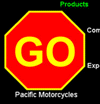n our field, we seem to depend on design competitions to define what's good and bad design. This behavior is particular to our profession. Other creative types,
from decorators to writers, have their competitions - their games and tournaments - but being "good" is never the issue. Brilliance, originality, proficiency is what
matters. These artists don't have to stand on a high moral ground to get validation from their peers. Unlike us, they can be "bad," and still get a standing ovation.
Because of the need for creativity and diversity, web design is open to any creative web professional such as illustrators, designers or computer artists. The main
categories of use include: information design, visual design, performance, compatibility and interaction designs.
Before you decide whether to produce your own web design or license it, you need
to turn the creative into the practical. The next step is to make a prototype of your idea. Be sure to use materials that would be used for the final production. If you
can't produce your idea easily, it may be that it is impracticable and unreasonable.
In our daily work, the Silverlake Group uses four pragmatic questions:
1) Does the interface convey a "look and feel" appropriate to your client's message?
Illustrations, metaphors, and layout should all combine to convey the image your
clients has named as a goal - friendly, sophisticated, businesslike, whatever.
2) Will the use of your site be obvious to first-time visitors?
A site's use will be more obvious to visitors if you use familiar metaphors and conventions - a map for navigating a geographic area, a labeled door for entering a
new area, a question mark icon indicating a help section, or a beveled interface indicating a clickable button - but that's not to say that there's no room for orginality.
It's almost impossible, of course, to know whether what seems like a clear interface to you will be equally obvious to others. Providing a set of instructions isn't
necessarily a bad idea, but if you're depending on visitors to read them before they use your site, you know you're in trouble. The only way to really find out whether your
interface is working is with user testing: Running tests with people who have never used or seen your site can tell you how likely it is that someone who has no history
with the site and its development will understand your solutions.
3) Are cues and feedback consistent?
Any interface has to be learned to some extent. Even when an interface uses only
the most time-honored conventions, a user starts by testing his or her assumptions about how it will work. If a tool works as expected - if clicking an upward pointing
arrow takes you to the top of the page, for instance - the user learns a skill (getting to the top of the page), is encouraged to explore more, and learns to trust the interface.
If on another page the upward-pointing arrow behaves differently, that trust is broken, the skill is unlearned, and the user is discouraged from exploring. A hallmark of a
good interface is that it uses metaphors, location on screen, shape, color, sound, and every cue consistently, reassuring visitors that their efforts will be rewarded.
4) Does the design accomodate lowest-common denominator systems?
Too often, designers depend on graphics to convey important navigation information
and content, making the site unusable to visitors on text-only systems. This is not to say that you can't use graphical navigation systems on your site. It only means that
you may sometimes need to provide alternate paths for text-only browsers, and you should be careful to take advantage of the methods for accomodating text-only
systems that are built into HTML's image code. Likewise, if your target audience includes users on low-bandwidth systems and older browsers, you should be careful
to plan interface elements with minimum files sizes and avoid using Shockwave, Flash Macromedia or other specialized media to execute your ideas.
As a preview of our work, the Silverlake Group has designed the following samples of home pages for fictitious clients. As, usually, the first - and sometimes the only -
page any visitor to your site will see, the site's home page is arguably its most important feature, and so worth a little special attention in communication design.
Like the cover of a book or a magazine, or the opening credits of a TV show, its primary role is to state your message - whatever that may be - loud and clear.
Web designers have struggled to find the right balance of content and style on their home pages. One school of thought argues that the home page should highlight,
and provide direct links to, as much of the site's content as possible. Another abhors the crowded and confusing page that such an approach can cause and opts
for simple home pages with nothing but links to the site's main section. Some models mimic magazine covers or newspaper layouts. The samples shown here
were developed to illustrate some possible approaches to attract visitors to continue browsing web sites.
 Click picture to zoom photo: For American Money, customized financial planning tools can be designed to lead customers to the
appropriate products and services. Clients can examine mutual funds in detail with everything from a fund's top holdings to a biography of its manager. A retirement savings worksheet, one of
the financial planning tools, allows clients to input personal financial data and set goals. A minimum amount of graphics allow these pages faster access to users.
Click picture to zoom photo: For American Money, customized financial planning tools can be designed to lead customers to the
appropriate products and services. Clients can examine mutual funds in detail with everything from a fund's top holdings to a biography of its manager. A retirement savings worksheet, one of
the financial planning tools, allows clients to input personal financial data and set goals. A minimum amount of graphics allow these pages faster access to users.
 Click picture to zoom photo: At Pacific Motorcycles, the icon for the
main page is Java-animated to show visitors what section they're visiting. A horizontal text scroller refreshes the screen with business suggestions and news updates each time the visitor accesses the
web site. The home page also makes visitors feel at home with evocative 'vroom-vroom' sounds.
Click picture to zoom photo: At Pacific Motorcycles, the icon for the
main page is Java-animated to show visitors what section they're visiting. A horizontal text scroller refreshes the screen with business suggestions and news updates each time the visitor accesses the
web site. The home page also makes visitors feel at home with evocative 'vroom-vroom' sounds.
 Click picture to zoom photo: JTT Data is an information systems and computer networking company in Japan introducing ByteSite, Inc., a collaborative, communications-rich, World Wide Web
environment for JTT Data's Internet 1999 World Exposition showcase. ByteSite features Personality Capsules and Group Capsules that allow for the free exchange of opinions and ideas,
plus an entertainment communication zone dubbed World Fiction, with translation-on-demand capabilities for handling Japanese.
Click picture to zoom photo: JTT Data is an information systems and computer networking company in Japan introducing ByteSite, Inc., a collaborative, communications-rich, World Wide Web
environment for JTT Data's Internet 1999 World Exposition showcase. ByteSite features Personality Capsules and Group Capsules that allow for the free exchange of opinions and ideas,
plus an entertainment communication zone dubbed World Fiction, with translation-on-demand capabilities for handling Japanese.
For more information, please visit us at the NEW website

